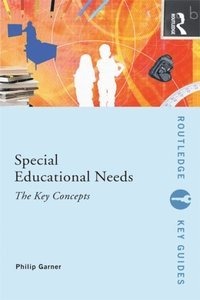
Liknande böcker
Educating Individuals with Disabilities : IDEIA 2004 and Beyond
Bok av Phd Elena L Grigorenko
At the beginning of the 21st century, two pieces of educational legislation are coming together as the more prominent movements of standards-based reform in the United States: The No Child Left Behind (NCLB) Act of 2001 and the more recently implemented Individuals with Disabilities Educational Improvement Act (IDEIA) of 2004. The provisions of these two pieces of legislation generally work in concert to ensure high quality instruction that closes the achievement gap; yet, poor students are disproportionately represented within the special education population and as a result, IDEIA is still very relevant to discussions about the right-to-education movement and the poverty gap.This interdisciplinary collection is the first to comprehensively review the Individuals with Disabilities Educational Improvement Act (IDEIA) of 2004 and distill the changes to professionals working with learning-disabled students. The book takes an overarching perspective; the first half of the book situates IDEIA in its historical, political, and legal context, while the second half covers practical issues that need to be addressed by professionals on a daily basis.Other topics that are analyzed include: provisions of NCLB and IDEIA; challenges of implementing IDEIA; and, response to Intervention (RTI) models and the aims of these models. The goal of NCLB and IDEIA is the same: a single, well-integrated system that connects general, remedial, and special education students and considers all the learning needs of all students. ""Educating Individuals with Disabilities"" points out the challenges of reaching this goal, but also delineates the steps that can be taken in order to achieve it.







